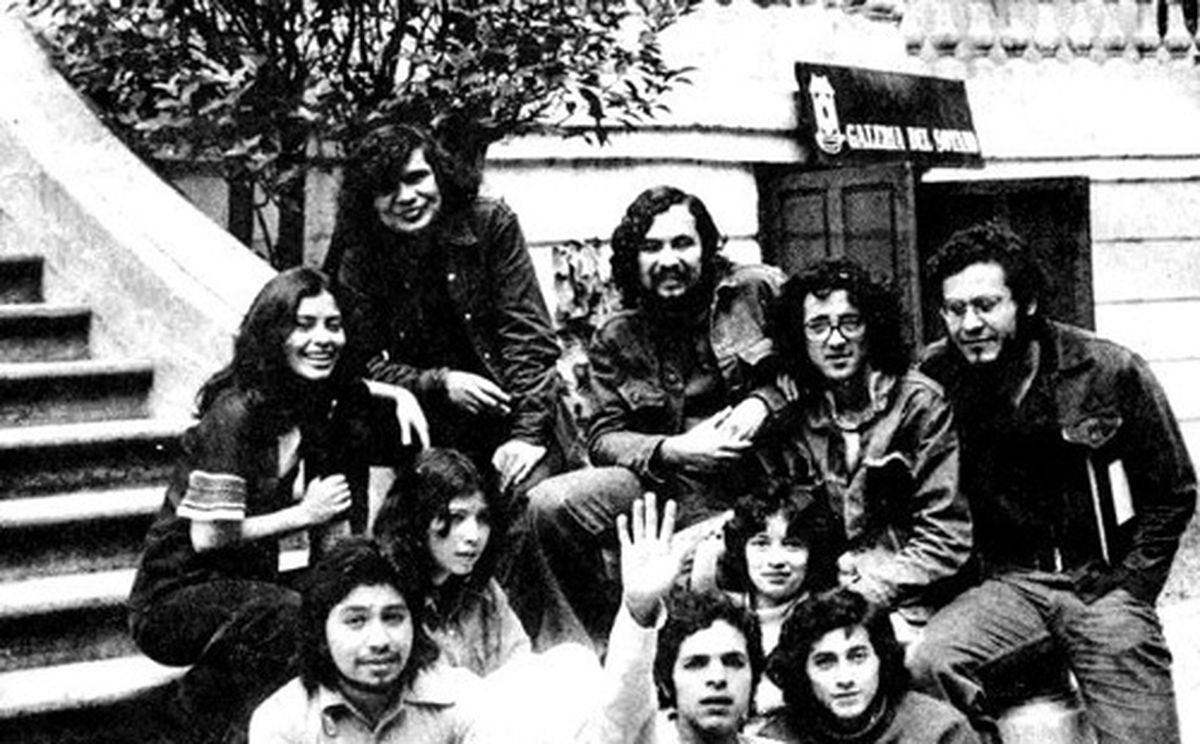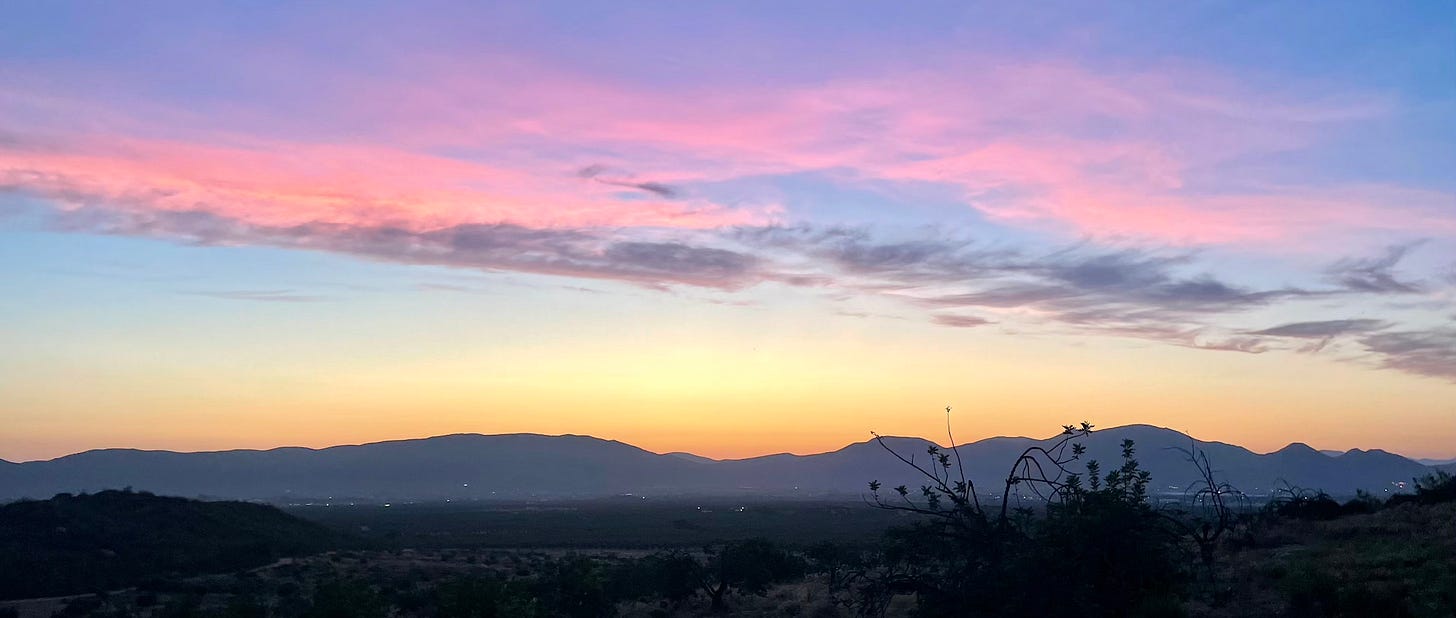The Part about Part I
It took me several tries, but I finally finished The Savage Detectives. When I visited Mexico City last month I decided to give it another shot and even though it took me most of the month I’m glad I did.
I didn’t really care for Part I my first few attempts and to be honest I’m still not a huge fan. I like it more now but I think a lot of that has to do with being more familiar with the part of Mexico City where much of the action in Part I takes place.
In Part I a young poet named Juan Garcia Madero comes under the influence of Arturo Belano and Ulises Lima, the leaders of a splinter group of poets who call themselves visceral realists. They are opposed to the status quo in Mexican poetry embodied by poets like Octavio Paz. They are committed to finding Cesárea Tinajero, who reputedly founded the visceral realist movement with the publication of a single poem in the 1920s, but seem more interested in living as bohemians, which is part of my problem with Part I. Madero’s pursuit of various women isn’t that interesting to me and is often sexist. Nevertheless, it is Madero who narrates his involvement with the group in a diary from for the last two months of 1975. On New Year’s Eve, Madero, Belano, Lima, and a woman named Lupe flee the city to escape Lupe’s pimp under the pretense of looking for the movement’s founder in Sonora.
Part II, which takes up the bulk of the book, is told from the point-of-view of 40 different narrators who track Belano and Lima’s movements all over the globe during the next 20 years. In my opinion, Part II is where the magic happens. Although it’s frustrating trying to follow the storyline through such a wide lens, this is where Bolaño’s project to reimagine the 20th century Latin American novel takes shape and each narrator has a unique story to tell. Each section in Part II is in the form of a testimony with the person asking the question, “When was the last time you saw Belano/Lima?” invisible to the reader, like the Joseph Cotton character in Citizen Cane, trying to solve the mystery of Rosebud, but on a much grander, more postmodern scale.
In Part III the narrative in Part I resumes with a somewhat wiser Madero narrating the explosive search for Cesárea Tinajero.
The Part about Part II
I love the way Part II explores the legend of Belano and Lima who are only legends because Bolaño has decided they are and treats them as such even though everyone has just about it had it with these two by the end of the novel. The book moves from Mexico City to Barcelona and on to haunts that will be no surprise to those familiar with Bolaño’s work, like Girona and Blanes, and some that are new, like Paris, Israel, and Africa.
It’s widely known that many, if not most of the characters in the novel are based on real people. I was enthralled to learn that one character, who escapes Mexico City for San Diego, is based on someone named Ruben Medina who graduated from UCSD and now teaches at the University of Wisconsin Madison.
Last year he was interviewed for a story in El Pais about what it was like to be a character in one of the 20thcentury’s most important novels. Initially, he wasn’t thrilled, but he came to accept his minor role in the drama. He still sounds baffled by what happened.
“Bolaño gave visibility to a movement that was very, very marginal. The unfortunate thing is that now people only view that reality through him, through the legend, the myth, the figure of Ulises Lima, life in Mexico City in the late 70s, the Infrarealists at Café La Habana — all that stuff, it’s become almost like a mythology.”
This feels very familiar to me as it echoes what happens when a punk band gets big. I talked to Brian Baker of Minor Threat about just this, how the actions of a small group of people become mythologized. When I told him I grew up in northern Virginia just across the Potomac River from Georgetown yet missed the whole DC scene, he suggested there was no way I could have been there. What most people interpret as a “scene” was just what he and his friends did together after school.
But there’s magic in that mythology, no? Don’t you wish you could have been a fly on the wall during that after-school project? To be in those rehearsal rooms? To listen to the playback of that first demo with the band?
The Part about Part III
Bolaño isn’t writing a story about himself and his friends. He’s writing a story about Latin American literature and putting himself and his friends at the center of it. He didn’t set out to write A Portrait of the Artist as a Young Man in Mexico City. He set out to write the Ulysses of the Latin American diaspora. That’s a much more interesting project especially when you consider that it worked. Bolaño singlehandedly broke the stranglehold that magical realism had on the Americas. He forced thinkers in North America—Mexico and the United States—to reckon with Chile and the horrors that took place there.
In spite of this there isn’t a major biography of Bolaño—it’s all in the novels but distorted in so many different ways that make the facts of biography kind of hum-drum. The secondhand counterfactual accounts of Part II are much more interesting.
It’s fascinating to think about Bolaño’s creative decisions in structuring this part of the novel. I’m not talking about the decisions made by the characters regarding their actions within the story. That’s just writing. I’m talking about why Bolaño choose this particular narrator to tell this particular story at this particular moment in the narrative.
It’s all very high-brow, which is what makes Part III so unexpected and so explosive. Part III picks up where Part I left off, except now we know the fate of virtually all of the visceral realists and of visceral realism itself. Our detectives, Belano and Lima, close in on Cesárea Tinajero just as the murderous pimp from Mexico City closes in on them. It’s basically a thousand-mile car chase with an explosive finish.
I wasn't expecting the novel to get so dramatic toward the end but I should have. Part II wraps up with all kinds of wild encounters: children rescued from a hole in the earth, duels on the beach, guerrilla warfare on the African continent.
Everything about the book tells the reader, “Look, this is just the story of some marginal poets who conned others into taking them more seriously than they took themselves” and yet the end of The Savage Detectives is as action-packed and cinematic as a crime novel.
The Part about the Reader (and by reader I mean me)
The Savage Detectives inspires me in ways I worry are best kept to myself because I sound like a crazy person when I talk about it.
Bolaño's prose has a way of turning up the heat on the cauldron that is my brain. Things coalesce and rise to the surface and present themselves as new ideas. Things that have nothing to do with The Savage Detectives and yet have everything to do with The Savage Detectives.
It’s tempting to say it’s like a drug but that romanticizes drugs in a way that runs counterfactual to my experience with them.
There's something about the ambiguity Bolaño builds into the narrative at the sentence level that invites the reader to participate in the telling of the story. For example, he’s always laying out information and then telling the reader it’s not important, that it doesn’t matter, which feels wrong but feels authentic to most of my conversations these days.
The Savage Detectives wasn’t an easy read. I had to strain to make sense of the narrative and that struggle for meaning seeped into my imagination, linking together ideas I didn't even know I was thinking about because I wasn't thinking about them at all, but there they were, churning away in the back of my mind, gurgling at the bottom of the cauldron, waiting to be brought to the surface.
Twice during the reading of The Savage Detectives I had to put the novel aside and start writing in order to catch hold an idea before it was lost. One of those ideas has ballooned into… something.
Something to do with a punk rock. Something to do with 1993.
Something to do with a reluctant detective in a counterfactual past. Something to do with the struggle to make sense of our fucked up future.
Something to do with all the dead and dying punks we know. Something to do with you. Something to do with me.
Thanks for reading. Keep cool and stay safe. I’ll be back next week with some book, music, and movie recommendations.



This is such an engaging and thorough read. I’ve read a third and this inspires me to pick it back up. Currently half through 2666, which I’m enjoying immensely, but only piecemeal. And slow. I take breaks from it and read other novels.
Scenes--and the mythology that sometimes surrounds them- have always fascinated me. PDX had a great scene in the early 90s, but it's 100% accurate to say that a lot of people living right in the middle of it had no idea it was happening. For every band that got "big," there were fans that saw them earlier at a house party or open band night. You can keep distilling this down until you get to a core of maybe 4-5 people, most of whom are either partners of the band members, or siblings.
I don't get a out a whole lot anymore, but in a world of Bandcamp and DistroKid, I wonder if that same organic growth follows the same trajectory (if that makes sense).